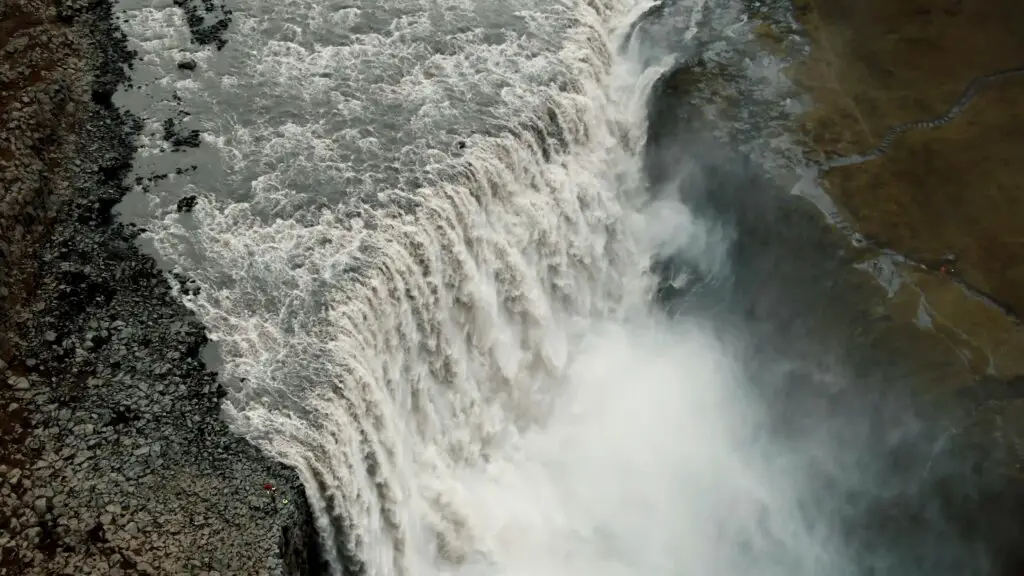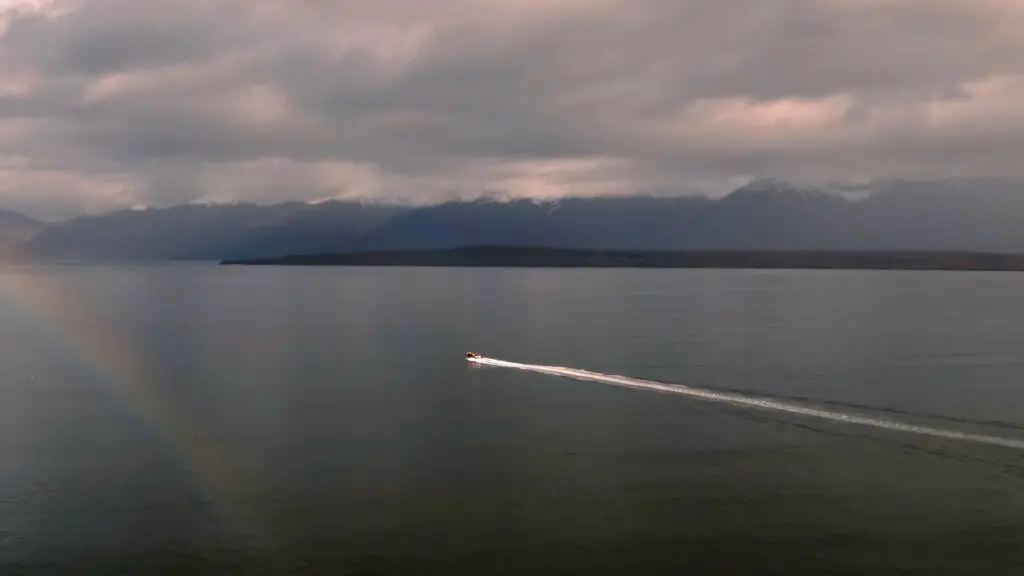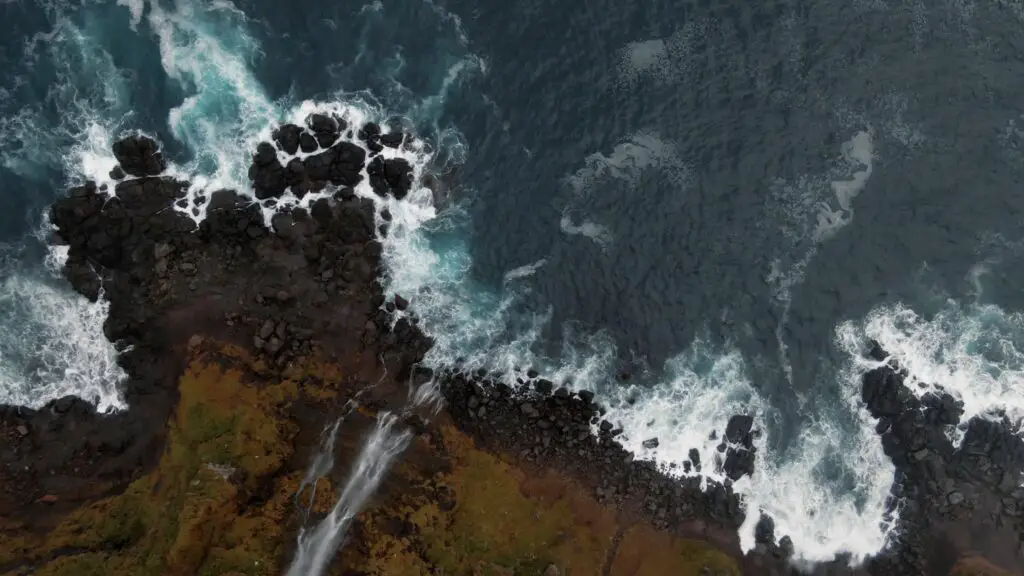Flying over water with a drone can be pretty spectacular and fun
Flying over water with the DJI Mini 3 and 3 Pro is possible, but requires preparation and attention. There are some important best practices to minimize the risks. Some are specific to the Mini 3 Pro, while others apply to any drone of the DJI Prosumer line
Here are some related articles that you may find useful:
- How to use the map and the radar with the Mini 3 Pro
- DJI Mini 3 Pro obstacle avoidance system
- Mini 3 Pro Return To Home
- Mini 3 Pro mistakes to avoid
- Mini 3 Pro signal range
- Mini 3 Pro beginner guide
- How to find a lost drone
If You Prefer To Watch It As a Video
Is the Mini 3 Pro Water resistant?
Like most prosumer drones, the Mini 3 is not waterproof. It is able to stand a few drops of rain, but it gets very quickly damaged or destroyed by water
Even worst in the case of spray from salty waves. In windy conditions be aware of waves and avoid flying close to the sea. The same applies when flying over waterfalls

Downward Sensors Get Fooled by Water
A major unexpected issue is due to the fact that the downward sensors do not work properly over water, as they struggle to analyze reflective surfaces
They get fooled by the changes in luminosity, so the elevation of the aircraft shown on screen is often misleading when flying at low altitudes. Under these circumstances, you should not rely on the downward sensors to protect from entering the water

Even when simply advancing straight ahead, the drone may raise or descend slightly as it wrongly detects an obstacle at a close distance below
The higher the aircraft flies, the more accurate the reading of the altitude by the downward sensors, as the water is seen more as a solid surface rather than a reflective one
I would suggest to inexperienced users to remain at an altitude of at least 30 meters or 100 feet when flying over water for the first time, especially in the case of waves
Return To Home
Instead of immediately flying out over the water, it is better to let the drone hover near the take-off point until the home point is updated, so that the aircraft can return to the correct position in case of a loss of signal
It is also a useful test to make sure the aircraft is behaving correctly before flying out
Before flying it is also a good idea to check the RTH settings. In the Safety Settings of DJI Fly app, by going to Advanced Safety Settings we can select the behavior of the aircraft in case of signal loss, with the options RTH, Descend, and Hover
- Descend must absolutely be avoided, as we obviously don’t want to land in the water
- Hover is a suitable option, in this case, the drone will remain static and we can bring it home manually
- In most cases the most suitable option is RTH, as the aircraft will immediately move toward the home point, thus saving precious battery life

In the Safety Settings, it is possible to specify the RTH altitude
In case of loss of signal, the aircraft will ascend to this altitude before making its way to the home point and then descending for landing
While flying over water, in most cases the route will be clear of obstacles like tall trees and buildings, so we can set a low value of around 30 meters, thus saving battery life
Update the Home Point
If the operator is moving, for example on a boat, it is suggested to regularly update the home point. Many beginners believe that the home point is always where the controller is, but this is not always the case

The Home Point is set where the satellites connect after take off, in general close to the starting point
But if the operator is moving, the home point will remain in that position, which can be very far at the moment of the Return To Home
It is always possible to check the position of the Home Point on the map, it will be shown by a yellow circle around an H, while the position of the remote controller is shown by a blue dot, and the aircraft by a triangular shape
It is possible to modify the position of the Home Point at any time in the tab Safety of the Settings by selecting the option Update Home Point
A map appears on the screen with the position of the aircraft and the controller. It is then possible to drag the yellow circle around to move the Home Point manually, or else it can be automatically updated to the position of the aircraft or the position of the controller by tapping on the two icons on the right
Taking off from a moving boat is a very advanced operation to be done only by very experienced users. In this circumstance, it is crucial to be able to take off and land from the hand
Weather Conditions
Always check the weather conditions before flying over water, especially the wind conditions
The Mini 3 Pro is relatively powerful for its size, but it is a lightweight model with limited wind resistance
Windy conditions over water are even more dangerous because of the possibility of spraying from big waves

In the case of medium to strong winds, it is suggested to start flying into the wind whenever possible. If we should notice that the aircraft struggles to advance, it will be easy to land it safely
If the drone starts off flying with the wind behind, it will quickly get very far away and it might be impossible to bring it back into the wind
If the wind is too strong coming back, lower the altitude to about 20 to 25 meters, as the wind is less powerful at a low altitude, and set the speed mode to Sport for extra power
If the drone still cannot make it, try to come back at a slight angle compared to the wind, making occasional turns
Be Aware of Obstacles
When flying a drone, it is always important to know where the surrounding obstacles are. Even more so when flying over water, as in case of a collision the aircraft will sink leaving no chance of recovering it
Over water, there are fewer chances of encountering traditional obstacles, like trees, buildings, and electric wires
But there are other ones, specific to this situation, like waves, birds, and boats
When flying over water with the wind on the back, it is impossible to notice the approach of a big wave, therefore it is recommended to maintain a distance from the surface of the water of at least 15 meters or 50 feet
Some birds, like seagulls, can have an aggressive attitude toward drones, also we don’t want to disturb wildlife. Therefore avoid flying in an area where you notice the presence of birds

If you should notice the presence of a bird in the surrounding while filming, avoid having the aircraft in a static position and raise in altitude
Also when flying backward or sideways we might not notice approaching ships or small boats. Once again I suggest avoiding low flying to reduce the risk of a crash
Check the Battery Level
Always check the battery level before taking off and make sure to have enough battery life, especially if you plan to fly relatively far out over the water
I suggest keeping the aircraft in the line of sight at a distance of no more than 300 meters. Start bringing the bird home with at least 30% of battery remaining to avoid too much stress
